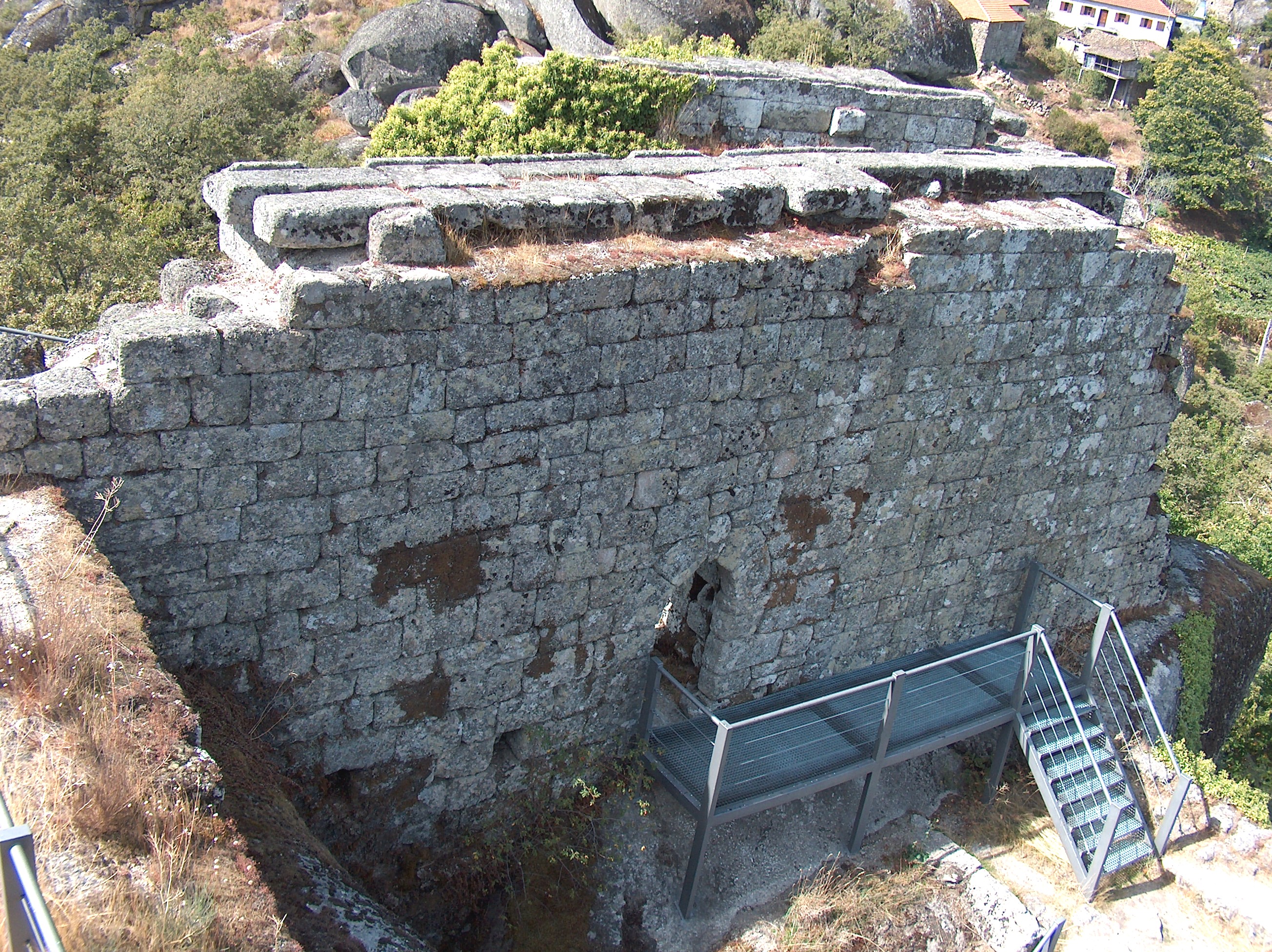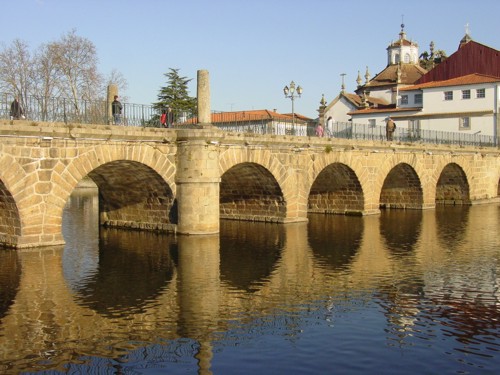Alto Trás-os-Montes on:
[Wikipedia]
[Google]
[Amazon]
Alto Trás-os-Montes (), or ''Nordeste Transmontano'', is a former NUTS-level 3 subregion of the Norte Region of

 Institutionally, the municipalities of the Trás-os-Montes are aggregated into three associations that plan and promote regional development tasks within the region: ''Associação de Municípios da Terra Fria do Nordeste Transmontano'' (which include Bragança, Miranda do Douro, Mogadouro, Vimioso and Vinhais), the ''Associação de Municípios da Terra Quente Transmontana'' (with Alfândega da Fé, Macedo de Cavaleiros, Mirandela and Vila Flor) and ''Associação de Municípios do Alto Tâmega'' (Boticas, Chaves, Montalegre, Ribeira de Pena, Valpaços and Vila Pouca de Aguiar). The municipality of Mogadouro falls within the ''Associação de Municípios do Douro Superior''. The AMTF-NT assumes the largest part of regional development funding and organizational motivation.Gestluz e Inpublic (June 2008), p.16
The agro-forestry activities in the region are transitioning to socially or economically viable commerce sectors, with the emigration of more residents into the urban areas. Agriculture, with its base in the production of olive oil, the raising of cattle, and cultivation of fruit orchards, remains the primary source of income in this region.
Institutionally, the municipalities of the Trás-os-Montes are aggregated into three associations that plan and promote regional development tasks within the region: ''Associação de Municípios da Terra Fria do Nordeste Transmontano'' (which include Bragança, Miranda do Douro, Mogadouro, Vimioso and Vinhais), the ''Associação de Municípios da Terra Quente Transmontana'' (with Alfândega da Fé, Macedo de Cavaleiros, Mirandela and Vila Flor) and ''Associação de Municípios do Alto Tâmega'' (Boticas, Chaves, Montalegre, Ribeira de Pena, Valpaços and Vila Pouca de Aguiar). The municipality of Mogadouro falls within the ''Associação de Municípios do Douro Superior''. The AMTF-NT assumes the largest part of regional development funding and organizational motivation.Gestluz e Inpublic (June 2008), p.16
The agro-forestry activities in the region are transitioning to socially or economically viable commerce sectors, with the emigration of more residents into the urban areas. Agriculture, with its base in the production of olive oil, the raising of cattle, and cultivation of fruit orchards, remains the primary source of income in this region.

 {{DEFAULTSORT:Alto Tras-os-Montes Subregion
Former NUTS 3 statistical regions of Portugal
{{DEFAULTSORT:Alto Tras-os-Montes Subregion
Former NUTS 3 statistical regions of Portugal
Portugal
Portugal, officially the Portuguese Republic ( pt, República Portuguesa, links=yes ), is a country whose mainland is located on the Iberian Peninsula of Southwestern Europe, and whose territory also includes the Atlantic archipelagos of ...
. It was abolished at the January 2015 NUTS 3 revision. Its 15 municipalities occupied an area of in the north-east of continental Portugal with an estimated 2008 population of 214,460 inhabitants; thus it constituted approximately 40% of the area, but only 6.1% of the population, of the Norte Region.
Geography
The Trás-os-Montes area refers to a contiguous territory that has similar social and cultural identities, but diverges on the potential economic abilities, while constituting a territorial unit with scale and critical mass to act in concert politically. In addition to its land border withSpain
, image_flag = Bandera de España.svg
, image_coat = Escudo de España (mazonado).svg
, national_motto = ''Plus ultra'' (Latin)(English: "Further Beyond")
, national_anthem = (English: "Royal March")
, i ...
(in the north and north-northeast), it is also juxtapositioned with the subregions of the Douro
The Douro (, , ; es, Duero ; la, Durius) is the highest-flow river of the Iberian Peninsula. It rises near Duruelo de la Sierra in Soria Province, central Spain, meanders south briefly then flows generally west through the north-west part o ...
(to the south), Tâmega Subregion
Tâmega Subregion () is a former NUTS3 subregion, part of the NUTS2 region of Norte Region, Portugal. It was abolished at the January 2015 NUTS 3 revision.Ave
''Alta Velocidad Española'' (''AVE'') is a service of high-speed rail in Spain operated by Renfe, the Spanish national railway company, at speeds of up to . As of December 2021, the Spanish high-speed rail network, on part of which the AVE s ...
(in the southwest) and Cávado (in the west). The NUTS III region of Alto Trás-os-Montes includes the following municipalities:
* Alfândega da Fé - a Moorish enclave, it was conquered by Asturian Christians and its original name, ''Alfandagh'' (which means ''hospice''), was extended with ''Fe'' (meaning ''faith''). The beginnings of its municipal history date back to a ''foral'' established on 8 May 1294, by King Denis of Portugal;
* Boticas - its history dates back to the Guedeões-Barroso line of hereditary clans (the Barrosos, were the predominant line, fixing themselves in Braga and Barcelos) becoming signeurs and administrators of the lands of the Trás-os-Montes until the lands were donated. The municipality was established during the Liberal regime (6 November 1836 decree) from portions of Chaves and Montalegre;
* Bragança - home to the hereditary line of the House of Braganza, established in 1442 by King Afonso, responsible for providing Portugal its kings (from 1640 to 1910) and the emperors (from 1822 to 1889): at the end of the Iberian Union
pt, União Ibérica
, conventional_long_name =Iberian Union
, common_name =
, year_start = 1580
, date_start = 25 August
, life_span = 1580–1640
, event_start = War of the Portuguese Succession
, event_end = Portuguese Restoration War
, ...
with Spain
, image_flag = Bandera de España.svg
, image_coat = Escudo de España (mazonado).svg
, national_motto = ''Plus ultra'' (Latin)(English: "Further Beyond")
, national_anthem = (English: "Royal March")
, i ...
, after the 1 December 1640, that the ascension of the 8th Duke of Braganza (then military governor of Portugal), John IV to the title of King that restored the Portuguese monarchy;
* Chaves – founded during the reign of the Flavian Emperor Vespasian
Vespasian (; la, Vespasianus ; 17 November AD 9 – 23/24 June 79) was a Roman emperor who reigned from AD 69 to 79. The fourth and last emperor who reigned in the Year of the Four Emperors, he founded the Flavian dynasty that ruled the Empi ...
, Aquae Flaviae, was renowned during this period for its thermal springs and baths. During the Middle Ages
In the history of Europe, the Middle Ages or medieval period lasted approximately from the late 5th to the late 15th centuries, similar to the post-classical period of global history. It began with the fall of the Western Roman Empire ...
it was traded back and forth between Spanish and Portuguese monarchs, as well as the seat of ''Monarchy of the North'', during the failed monarchist revolts of the 20th century;
* Macedo de Cavaleiros – named in honour of Martim Gonçalves de Macedo, who saved John, the Master of Aviz during the Battle of Aljubarrota, the municipality is best known for the '' Paisagem Protegida da Albufeira do Azibo'' a reservoir constructed during the 1980s to support the communities, but used for both recreational and leisure activities.
* Miranda do Douro
Miranda do Douro () or Miranda de l Douro in Mirandese () is a city and a municipality in the district of Bragança, northeastern Portugal. The population in 2011 was 7,482, in an area of 487.18 km². The town proper had a population of 1,9 ...
* Mirandela
* Mogadouro
* Montalegre
Montalegre () is a municipality in northern Portugal, located in the district of Vila Real, along the border with Spain. The population in 2011 was 10,537, in an area of 805.46 km².
History
Early construction in Montalegre date back 3500� ...
* Murça
Murça () is a municipality in northern Portugal. The population in 2011 was 5,952, in an area of 189.37 km². It is situated in the central part of the eastern district of Vila Real, and consigned to the Trás-os-Montes e Alto Douro region. ...
* Valpaços
* Vila Pouca de Aguiar
* Vimioso
* Vinhais
The inhabitants are not homogeneously distributed within the region: with most of the population concentrated in the principal urban agglomerations, the region has experienced a continuous process of rural-to-urban population migration to centres within or outside the region. Yet, simultaneously, the medium-to-small centres have taken on a catalytic role in urbanization and economic development.
The structure of the Trás-os-Montes hierarchy is highlighted by the largest of these "medium"-sized cities (Bragança, Mirandela and Chaves), corresponding to the principal urban poles, and articulated by a complementary urban network, constituted by the seats of the municipalities of Alfândega da Fé, Boticas, Macedo de Cavaleiros, Miranda do Douro, Mogadouro, Montalegre, Ribeira de Pena, Valpaços, Vila Flor, Vila Pouca de Aguiar, Vimioso and Vinhais.
The proximity of Trás-os-Montes with Spain has allowed a cross-cultural and cross-social partnership, that has helped to develop both social and economic projects.
Economy

 Institutionally, the municipalities of the Trás-os-Montes are aggregated into three associations that plan and promote regional development tasks within the region: ''Associação de Municípios da Terra Fria do Nordeste Transmontano'' (which include Bragança, Miranda do Douro, Mogadouro, Vimioso and Vinhais), the ''Associação de Municípios da Terra Quente Transmontana'' (with Alfândega da Fé, Macedo de Cavaleiros, Mirandela and Vila Flor) and ''Associação de Municípios do Alto Tâmega'' (Boticas, Chaves, Montalegre, Ribeira de Pena, Valpaços and Vila Pouca de Aguiar). The municipality of Mogadouro falls within the ''Associação de Municípios do Douro Superior''. The AMTF-NT assumes the largest part of regional development funding and organizational motivation.Gestluz e Inpublic (June 2008), p.16
The agro-forestry activities in the region are transitioning to socially or economically viable commerce sectors, with the emigration of more residents into the urban areas. Agriculture, with its base in the production of olive oil, the raising of cattle, and cultivation of fruit orchards, remains the primary source of income in this region.
Institutionally, the municipalities of the Trás-os-Montes are aggregated into three associations that plan and promote regional development tasks within the region: ''Associação de Municípios da Terra Fria do Nordeste Transmontano'' (which include Bragança, Miranda do Douro, Mogadouro, Vimioso and Vinhais), the ''Associação de Municípios da Terra Quente Transmontana'' (with Alfândega da Fé, Macedo de Cavaleiros, Mirandela and Vila Flor) and ''Associação de Municípios do Alto Tâmega'' (Boticas, Chaves, Montalegre, Ribeira de Pena, Valpaços and Vila Pouca de Aguiar). The municipality of Mogadouro falls within the ''Associação de Municípios do Douro Superior''. The AMTF-NT assumes the largest part of regional development funding and organizational motivation.Gestluz e Inpublic (June 2008), p.16
The agro-forestry activities in the region are transitioning to socially or economically viable commerce sectors, with the emigration of more residents into the urban areas. Agriculture, with its base in the production of olive oil, the raising of cattle, and cultivation of fruit orchards, remains the primary source of income in this region.
References
;Notes ;Sources * {{DEFAULTSORT:Alto Tras-os-Montes Subregion
Former NUTS 3 statistical regions of Portugal
{{DEFAULTSORT:Alto Tras-os-Montes Subregion
Former NUTS 3 statistical regions of Portugal